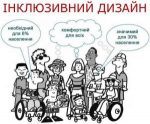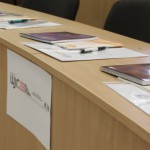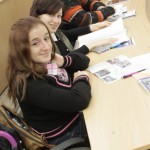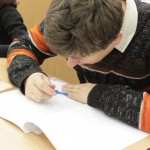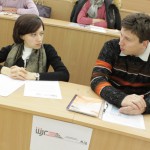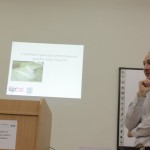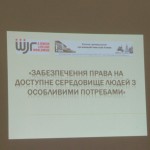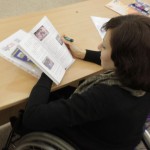A meeting of barrier-free environment took place on the 3rd of October. Eight representatives of NGOs working in the field of protection of rights of persons with disabilities have met within the project “Promoting the right for accessible environment for people with special needs”, which is realized by “Kiev Municipal League of Public Organizations of People with Disabilities” in support of the «World Jewish Relief».
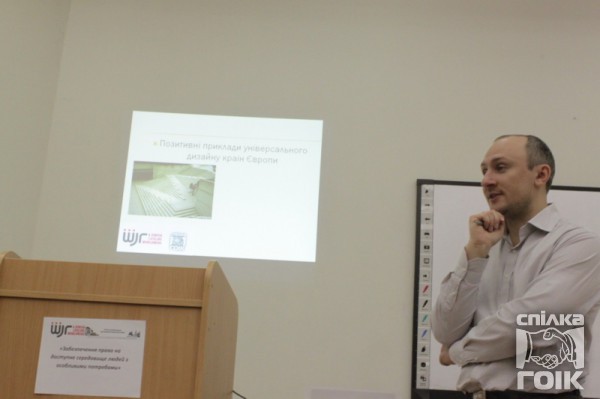
The goal of the meeting was to let the representatives learn more about the project that was designed to create equal access to popular architectural, cultural or other facilities for people with disabilities of different nosology.
The meeting was attended by the following NGOs:
• YPO of the disabled students “Gaudeamus”;
• YPO ” Generating Successful Action”;
• Local NGO for aid and assistance to children with disabilities from childhood “Cerebral”;
• “Dnipro district association of persons with disorders of the musculoskeletal system”;
• Regional partnership and assistance for people with disabilities in violation of the musculoskeletal system of Sviatoshynskyi district of Kyiv;
• Open International University of Human Development “Ukraine”;
• Kiev City Society of disabled “Commonwealth”.
“At this stage we define the objects and places to work on. It is important to know the main routes of Kiev people with disabilities and make them as accessible as possible. Somewhere, you may need to lower the height of the curb, and elsewhere just draw special lines for people with visual disabilities”,- said the president of the League Alexander Vorona , who chaired the meeting. – “It is not necessary to build big expensive ramps or even more expensive elevators everywhere. Our joint efforts , creative ideas and understanding the needs of people with different nosology from within will optimize the selected objects.”
The peculiarity of the project “Promoting the right for accessible environment for people with special needs” is also the fact that the involved NGOs can not only choose the places that need access by themselves, but also monitor the changes being made to these places and objects personally. This is possible through the creation of a common control group that checks the level of access and the quality of the performed work.


